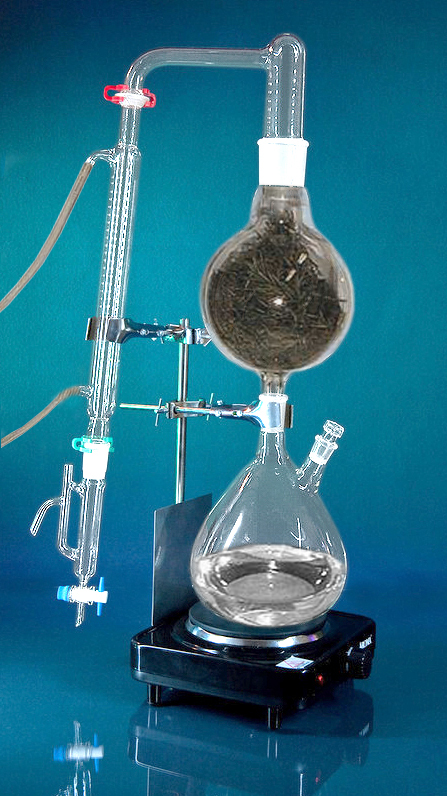
I found this site which describes their own steam distiller. I hope to gather useful information (like what to use) in order to build my own. http://www.crucible.org/essential_oil_distiller_operation.htm
List of items included in their kit:
ALL NEW BOROSILICATE (generically called "pyrex") GLASSWARE:
* 2 liter boiling flask, 24/40 sized ground glass joint and side port for water addition
* 2 liter Biomass flask, 24/40 joint on bottom and large 45/50 joint on top
* Still Head, 45/50 with built in thermometer adapter and male spherical condenser joint
* West Condenser, with a spherical joint that allows a wide range of alignment without risk of breakage or loss of seal integrety
* Receiver/separatory funnel with teflon valve
MECHANICAL PARTS:
* New hotplate with built-in flask support rod (240 volt for EUROPE available at no additional cost)
* Two laboratory Clamps
* Two 5 foot HOSES for condenser water
* WIRE SCREEN with ceramic heat dissipator to keep the flask happy while on the hotplate (240v european units only)
* 3 Packets of joint grease
* Keck Clamps to hold condenser, receiver, and still head together
Notes that may provide useful/decoding:
Distiller made from 'scientific-grade borosilicate glass'
Best choice: all glass (pyrex?) produces 'true' dry steam? for 'purest' oil?
No hose or rubber stoppers.
Glass joints.
Biomass Flask.
'"vertical" design, the biomass flask stays dry, none of the "boiling water" is wastefully condensed and trapped in the biomass flask, and because it uses separate flasks for boiling and biomass, there's further insurance that overheating or possibly burning your plant material will never happen.'
No comments:
Post a Comment